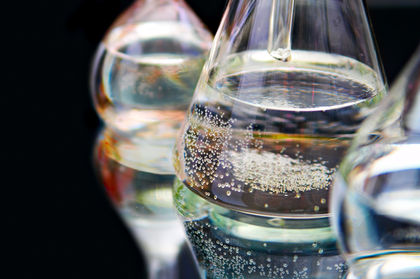CHEMICAL EQUILIBRIUM

Reactions are the "verbs" of chemistry—the activity that chemists study. Many reactions move to their conclusion and then stop, meaning that the reactants have been completely transformed into products, with no means of returning to their original state. In some cases, the reaction truly is irreversible, as for instance when combustion changes both the physical and chemical properties of a substance. There are plenty of other circumstances, however, in which a reverse reaction is not only possible but an ongoing process, as the products of the first reaction become the reactants in a second one. This dynamic state, in which the concentrations of reactants and products remains constant, is referred to as equilibrium. It is possible to predict the behavior of substances in equilibrium through the use of certain laws, which are applied in industries seeking to lower the costs of producing specific chemicals. Equilibrium is also useful in understanding processes that preserve—or potentially threaten—human health.